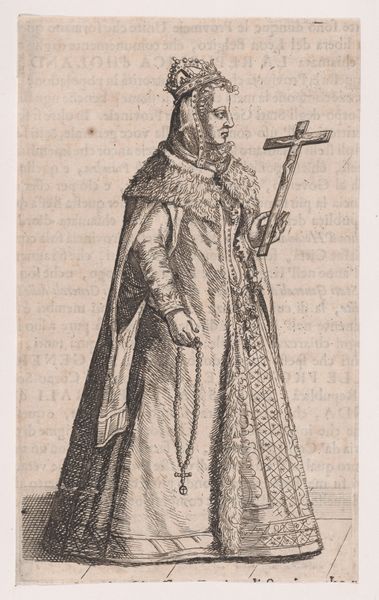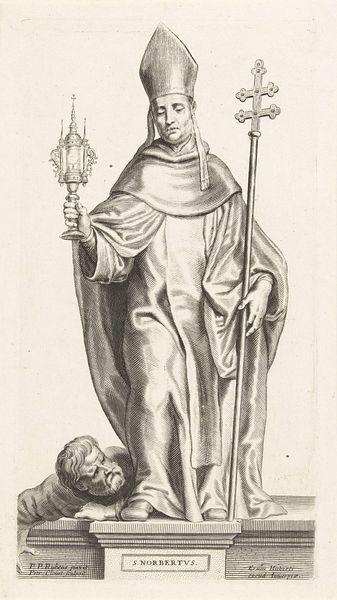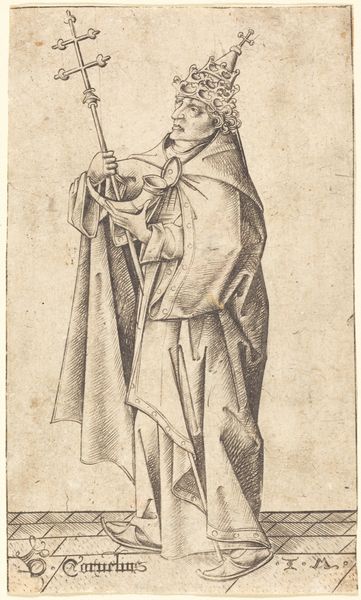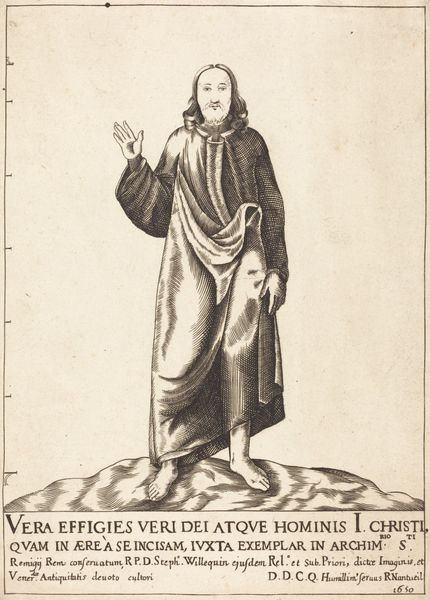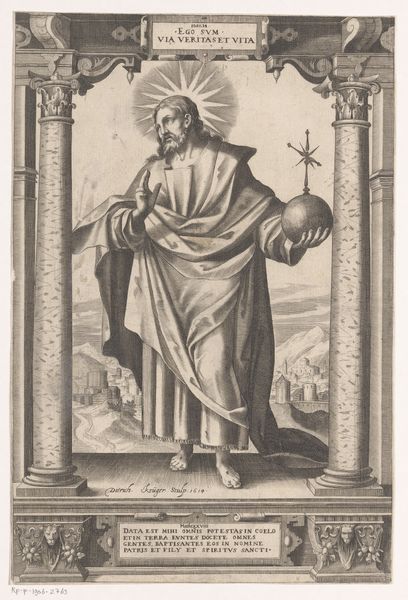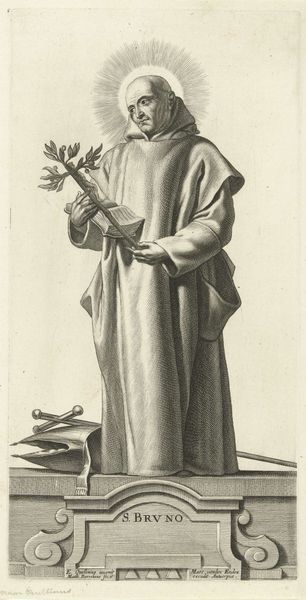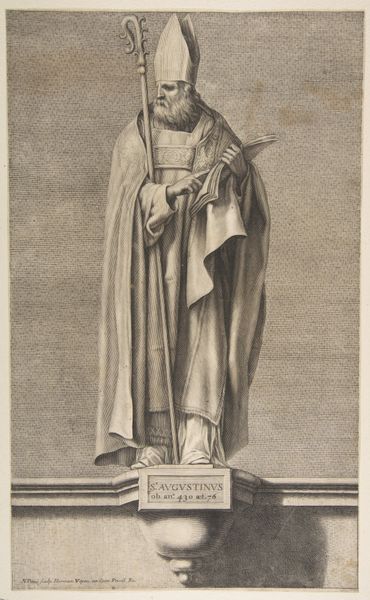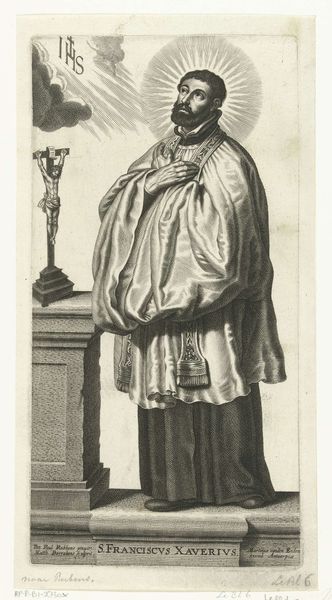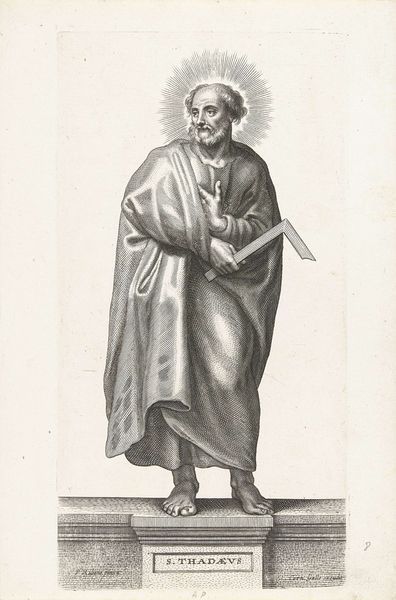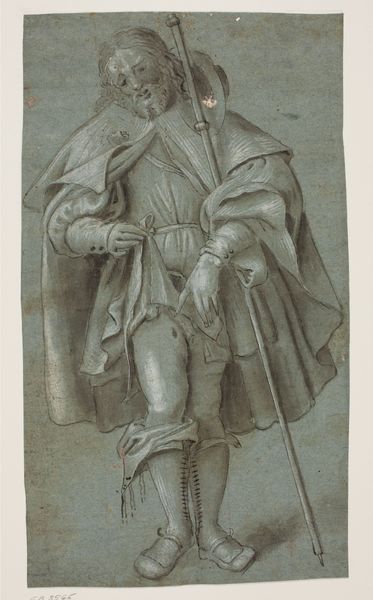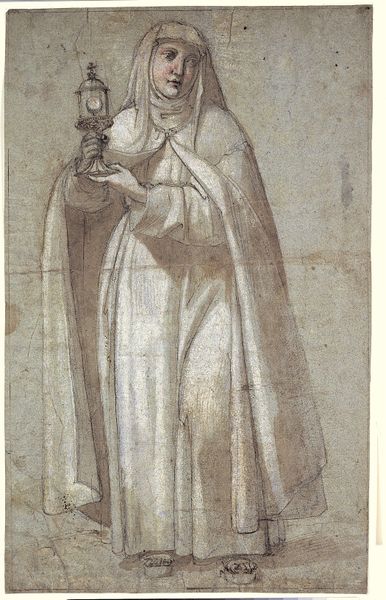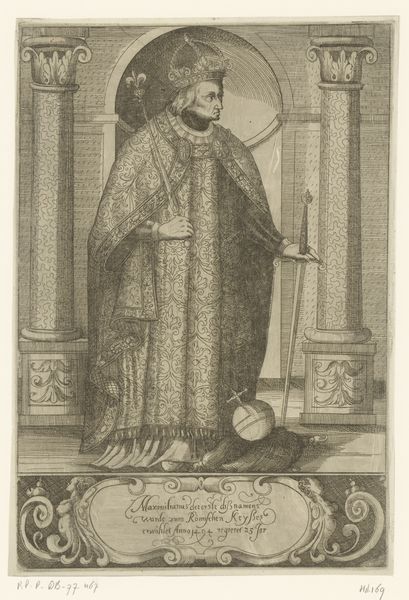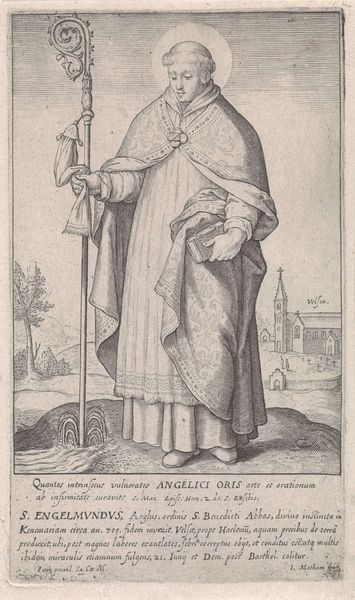
print, engraving
#
portrait
# print
#
romanticism
#
history-painting
#
engraving
Copyright: Public domain
Josef Kriehuber made this print of Ladislaus II, using a technique called lithography. This process involves drawing on a flat stone with a greasy crayon, then treating the stone so that ink adheres only to the drawn areas, allowing for multiple impressions. The inherent qualities of lithography, the smooth surface of the stone, and the greasy crayon, allow for fine lines and subtle tonal variations. Look closely at the textures and patterns of Ladislaus' garments. The artist has mimicked the rich fabrics and elaborate details of the clothing. Consider the social context of printmaking. Lithography allowed for the relatively inexpensive reproduction of images, making them accessible to a wider audience. Prints like this one played a role in shaping historical narratives, and collective memory, bringing images of historical figures to the masses. The amount of work involved in producing each print, from preparing the stone to hand-coloring the final image, is considerable. By appreciating the materials, the making, and the context, we move beyond simply admiring the image. We recognize lithography's broader cultural significance, challenging traditional distinctions between art and craft.
Comments
No comments
Be the first to comment and join the conversation on the ultimate creative platform.
